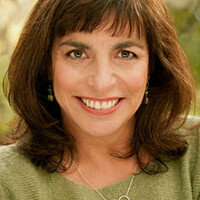Save neighborhoods: See the living city on a Jane Jacobs Walk
Loading...
If you have enjoyed a walk around your neighborhood, and certainly if you have participated in civic discussions about the way your neighborhood should grow and be planned, then there is a good chance that you, or your process, were influenced by Jane Jacobs.
Jane Jacobs lived and worked in New York City, and then Toronto. In her work, writing and life, she championed the idea of community building from the ground-up – often literally. Her ideas, which are collected in her seminal "The Death and Life of Great American Cities," among other books, influenced methods that many architects, engineers, and urban planners employ today when they plan and build to create a greater sense of community.
Sidewalks for walking, parks and other spaces for gathering, promotion of local and local-serving businesses, and scales that encourage people to populate and enjoy their neighborhoods are some of the ideas Jacobs prescribed, even though she had no formal architectural or planning education. (She claimed that her education arose from reporting on and experiencing cities.)
She also rallied and helped organize her own neighbors in New York’s Greenwich Village, SoHo and Little Italy when those wonderful and unique neighborhoods were threatened with intense development, including the proposed Lower Manhattan Expressway, in the early 1960s. Jane Jacobs died in 2006 at the age of 89.
Now, people all over the US are saluting Jane Jacobs by participating in local Jane Jacobs Walks the weekend of May 5-6 and throughout the year. The walks are the brainchild of a group of people including representatives from the University of Utah’s Center for the Living City, a nonprofit collaboration created with Jane Jacobs and based on her work, and that group’s sister organization in Toronto, The Centre for City Ecology. Stephen Goldsmith, Professor for Campus Sustainability at the University of Utah, and director of the University’s Center for the Living City, and his team are heavily involved in the work.
Anyone who wishes to celebrate Jane Jacobs’ life and legacy, and in turn their own neighborhood, is invited to join or host a Jane Jacobs Walk on May 5-6 and throughout the year.
The walks don’t have to be formal or rigid in any way. The idea is that people get outside and, by doing so, participate in the lives of their communities, simultaneously getting to know them and adding to their richness. The site offers opportunities to find a walk near you, as well as lots of information.
Organizers hope that, in the spirit of Jane Jacobs, participants will “walk, observe, connect and share,” thus participating in moving conversations about their communities.
The Christian Science Monitor has assembled a diverse group of the best family and parenting bloggers out there. Our contributing and guest bloggers are not employed or directed by the Monitor, and the views expressed are the bloggers' own, as is responsibility for the content of their blogs. Susan Sachs Lipman blogs at Slow Family Online.






